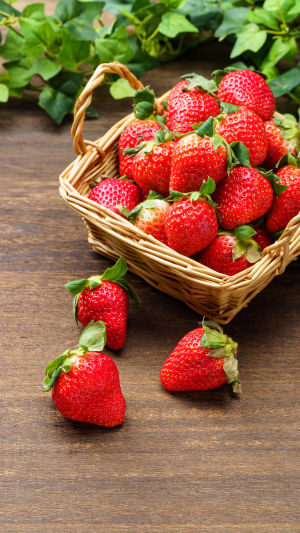Some individuals believe that strawberries, due to their frequent detection of pesticide residues across various tests, are the fruit with the highest pesticide contamination, making their consumption unsafe.
This concern has sparked discussions among consumers about the safety of eating strawberries. But, is this perception accurate? The answer is no.
As climate conditions become more complex and the area devoted to strawberry cultivation expands each year, the incidence of diseases affecting strawberries has also risen, leading to increasingly severe losses. To meet consumer demand for pest-free strawberries and boost yields, growers often resort to applying different pesticides to combat various pests and diseases during cultivation. This practice not only enhances the appearance and yield of strawberries but also effectively curbs the spread of pests and diseases, thereby preventing the onset and prevalence of human infectious diseases and safeguarding public health. Therefore, the use of pesticides in strawberry cultivation is both necessary and beneficial.
Moreover, strawberries have a relatively long growth period, with most pesticides being applied during the early stages of cultivation and none being used before harvesting. Over time, through exposure to wind, sunlight, rain, and natural degradation processes, pesticide residues on strawberry fruits become significantly sparse, greatly reducing their toxicity. When subjected to standard cleaning procedures before consumption, these residues pose no threat to human health. Thus, concerns about pesticide contamination should be alleviated.
Despite their susceptibility to more than 20 common pests and diseases, strawberries boast a delightful sweet and sour flavor and are packed with nutrients. Growers employ various pesticides to combat these challenges during cultivation. Advances in pesticide residue detection technology have made it possible to detect even trace amounts of pesticide residues, which explains why multiple types of residues are often found in strawberries.
However, the presence of multiple pesticides does not necessarily indicate high levels of contamination. The number of pesticide types detected and the quantity of residues present are distinct concepts. Detecting multiple pesticide residues simply implies the use of diverse pesticides for control purposes, not exceeding permissible limits. In reality, pesticide residues only pose a risk to human health if they surpass established safety thresholds.
How should one select strawberries? By following a few simple steps, one can ensure the choice of high-quality and delicious strawberries. Firstly, opt for strawberries with intact, moderately sized heads and uniform shapes resembling lychees. Avoid oddly shaped or excessively large strawberries, as they may lack flavor. Secondly, select strawberries with bright red coloration, ensuring uniformity, as uneven coloring may indicate varying degrees of ripeness, which is not desirable.
Additionally, it is crucial to properly clean strawberries before consumption to remove surface contaminants such as viruses, bacteria, and pesticide residues. Following these steps can maximize cleanliness:
1. Rinse strawberries under running water for at least 30 seconds without removing the tips. This helps wash away most pesticide residues and microorganisms. Avoid soaking strawberries in stagnant water, as it may lead to contamination of the fruit.
2. Soak the rinsed strawberries in rice water or lightly salted water for 5 minutes. Lightly salted water can eliminate harmful microorganisms, while rice water's alkalinity aids in breaking down acidic pesticides.
3. Finally, rinse the strawberries with cold boiled water after soaking to ensure thorough cleaning. At this point, the strawberries should be sufficiently clean and safe for consumption.





